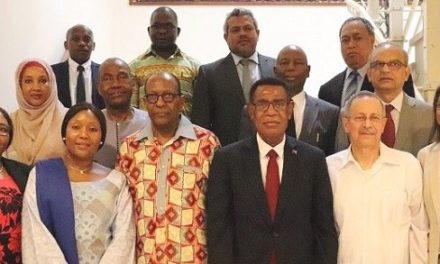
Overview on food self-sufficiency

By Erastus Ngaruka
Technical Advisor: Livestock.
To some, food self-sufficiency and food security may seem to be the same. However, these are two different phrases, with food self-sufficiency being an enable of food security. Food self-sufficiency refers to the reliance on own production to meet or satisfy daily food consumption, rather than purchasing or importing from elsewhere.
Moreover, food self-sufficiency is a critical aspect of food security and sustainable livelihoods. On the other hand, food security refers to the availability and accessibility to sufficient, safe, and nutritious food produced anywhere.
Overview of food production
There is continuous pressure on food availability in the world due to increasing populations and associated factors such as political unrest, and the COVID-19 pandemic. Potential food scarcity in many countries is evident and has been worsened by climatic conditions such as drought, and pest and disease outbreaks. Therefore, agricultural, and economic development is under constant pressure and threat. In Namibia, agriculture has been and potentially is the principal sector to support the majority of the population in the form of food, employment, and income.
Agricultural production in Namibia is predominated by livestock production, mainly cattle, sheep and goats, and there are other opportunistic enterprises such as poultry, piggery, and dairy. Crop production includes, maize and millet as staple foods, and horticultural production such as grapes, dates, onion, tomato, carrot, cabbage, and pumpkin amongst others. Some of these are produced on a commercial basis whereas some are mainly under subsistence farming practice in communal farming areas which harbor the larger portion of the farming population in the country.
Challenges to food production
The common challenges faced by most farmers in Namibia include climate change, diseases and pests, knowledge or skill gaps, absence of or inaccessible markets, inappropriate technologies, inaccessible inputs, inadequate farm infrastructure, higher cost of production, and antagonistic policy aspects among others. Food self-sufficiency needs a multifaceted approach where all aspects from production to consumption are identified and understood to explore appropriate production practices aimed at increasing agricultural output.
Improving food production
Efforts to improve local production should be based on localized research and experimental activities on production methods and technologies to ensure sustainable production of safe foods, including indigenous foods. Increasing consumption of local foods is key to stimulating local production and food self-sufficiency, which in turn reduces dependency on food imports and associated costs. However, local consumption is also influenced by the price of local foods, and consumers’ product
preferences. Food prices are associated with the production costs of inputs, value addition, packaging, storage, and transportation amongst others.
Another consideration for improving food production is access to land, finance, production inputs, information, and capacity building. The implementation of farm business operations requires capital investment or starting capital to acquire and manage resources including land, water, technologies, and labor amongst others. Other challenges of food production in developing countries is the reliance on importation of inputs, for example, seeds, implements or machinery, amongst others.
This is due to the unavailability of inputs or lack of capacity to manufacture inputs locally. Thus, the development of local inputs industries can reduce the dependency on the importation of inputs. In addition, value addition to local foods and raw materials will also reduce the importation of finished products. These will ultimately lower the cost of production and food prices, and in turn increase production and consumption of local foods.
In conclusion, food self-sufficiency is a developmental agenda that requires coordinated efforts to strengthen and harmonize the support systems such as policies, institutions, and investment to ensure sustainable agricultural and economic progression. “Produce what you can eat and eat what you produce”.












































